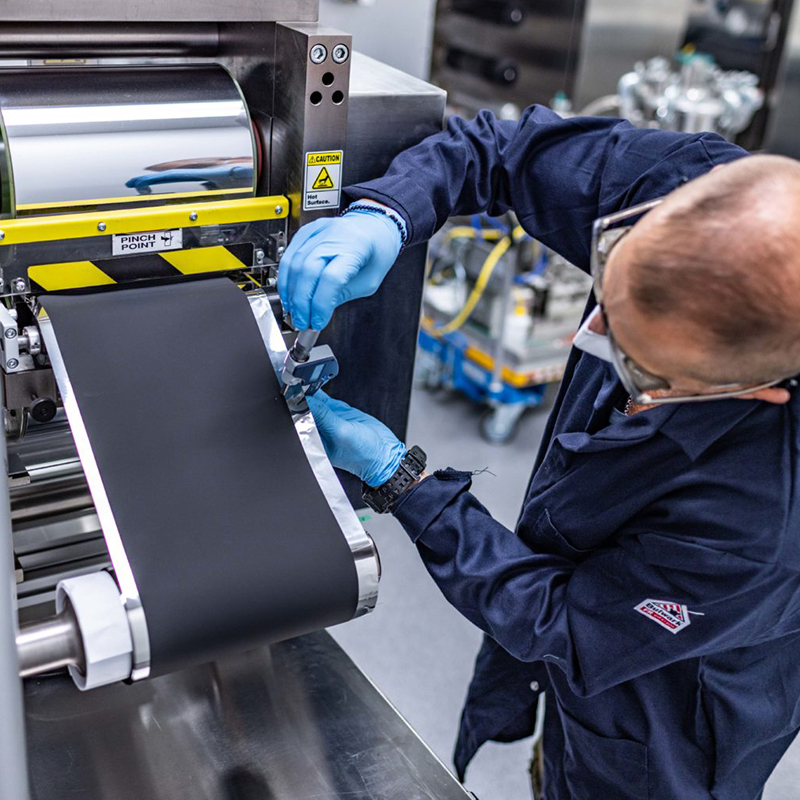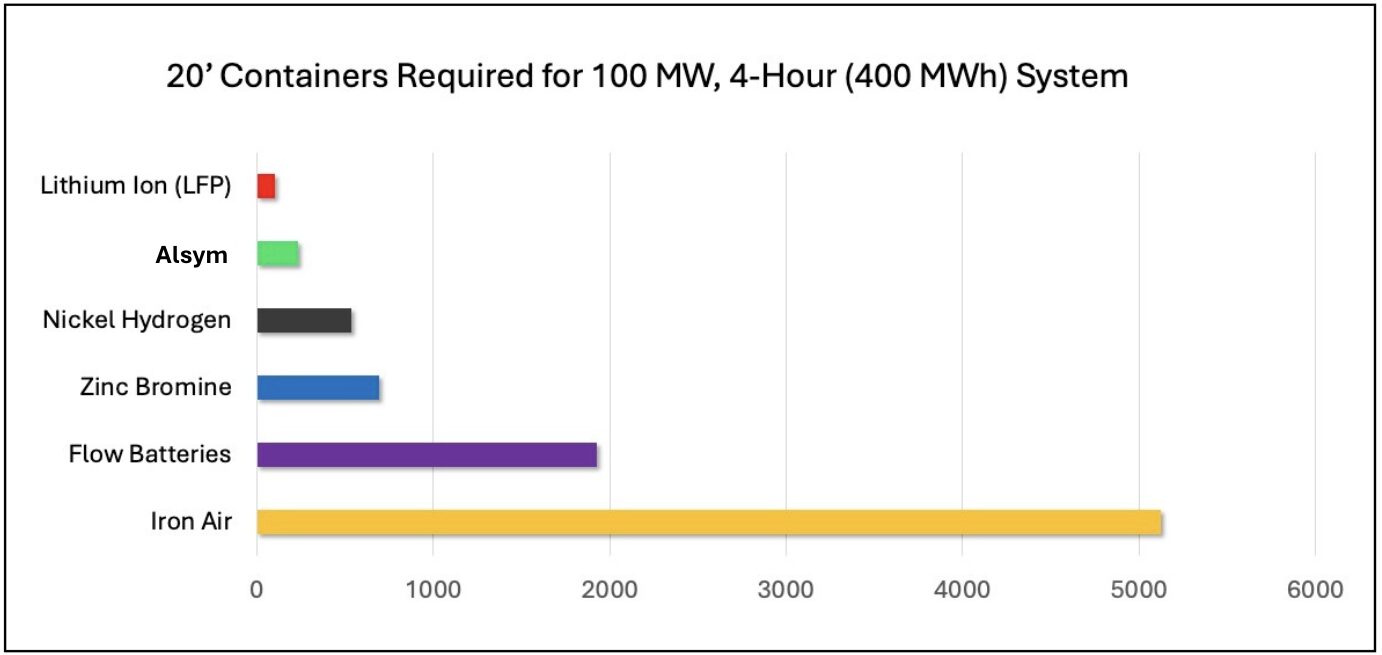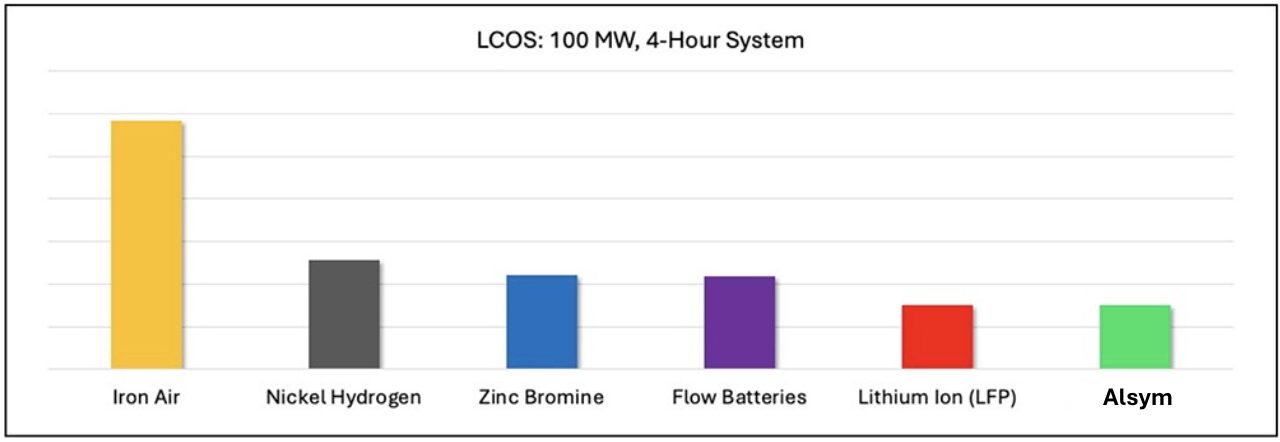The low-cost alternative to lithium-ion batteries
With low material costs, low manufacturing costs, and low system-level levelized cost of storage (LCOS), Alsym batteries are a single, economical solution for use in short and long-duration energy storage applications.
Low-cost, readily available materials
The use of low-cost, readily available materials in Alsym batteries offers a significant advantage by ensuring supply chain stability and cost predictability. These materials, sourced from North American providers and U.S. free trade partners, are abundant and affordable, which shields Alsym from the geopolitical risks associated with monopolized materials like cobalt and lithium.
By sourcing materials that are widely available, Alsym minimizes the risk of supply disruptions, allowing for more consistent production and timely delivery of products. This global availability also enhances the company’s ability to scale production quickly to meet growing demand. Additionally, avoiding rare or conflict-prone minerals aligns with sustainability goals and regulatory requirements, giving Alsym a competitive edge in regions with strict environmental and ethical standards.
Low manufacturing costs

Using existing infrastructure lowers manufacturing costs and makes scaling up production easy compared to other non-lithium options that require custom factories and equipment.
This helps to reduce up-front capital expenditures and lowers overall project costs.
Low cell costs
The low manufacturing and material costs of Alsym battery cells significantly reduce their overall cost, making them highly competitive in the energy storage market. By sourcing all metals and components from domestic suppliers or U.S. free trade partners, Alsym can avoid supply chain disruptions and price volatility commonly associated with rare or imported materials. This advantage is passed on to customers, resulting in a per-kWh cost comparable to lithium-ion and significantly lower than other non-lithium alternatives for stationary energy storage.
Lower battery energy storage system costs
Alsym battery cells are inherently non-flammable and immune to thermal runaway. That translates to simplified design with lower BESS costs when it comes to fire detection, fire suppression, thermal management, and other auxiliary systems. And because Alsym cells have a wide standard operating range, you’ll spend less on heating and cooling. All this adds to a less complex BESS, and lower complexity equals lower cost.
Containers with Alsym batteries can be designed in a stackable configuration that enables much higher energy per square foot; when complimented by the technology’s inherent safety, this makes it a natural battery choice for constrained footprints in urban and industrial areas.
Smaller footprints for lower land costs
Lithium-ion batteries provide high energy density in small footprints, but are inherently flammable and unsuitable for most large-scale or concentrated use cases. Low-performance non-lithium technologies have large physical footprints that significantly reduce their viability in areas where land is expensive–assuming it’s even available. Large low-density battery installations can potentially be sited in rural areas where land costs are lower, but this requires additional plant infrastructure as well as building new transmission capability, which is also prohibitively expensive.
With energy densities that are 2x to 10X higher than other non-lithium options, systems using Alsym batteries have physical footprints that require significantly less land than iron air, zinc bromine, nickel hydrogen and flow batteries. And unlike lithium-ion, Alsym-based systems can be stacked to provide maximum energy in minimal space.

Industry-leading levelized cost of storage (LCOS)
All of these advantages combine to create a cost-effective solution with an LCOS that’s significantly lower than other non-lithium technologies and competitive with lithium ion. This is essential to our mission of making safe, clean storage widely available worldwide.


